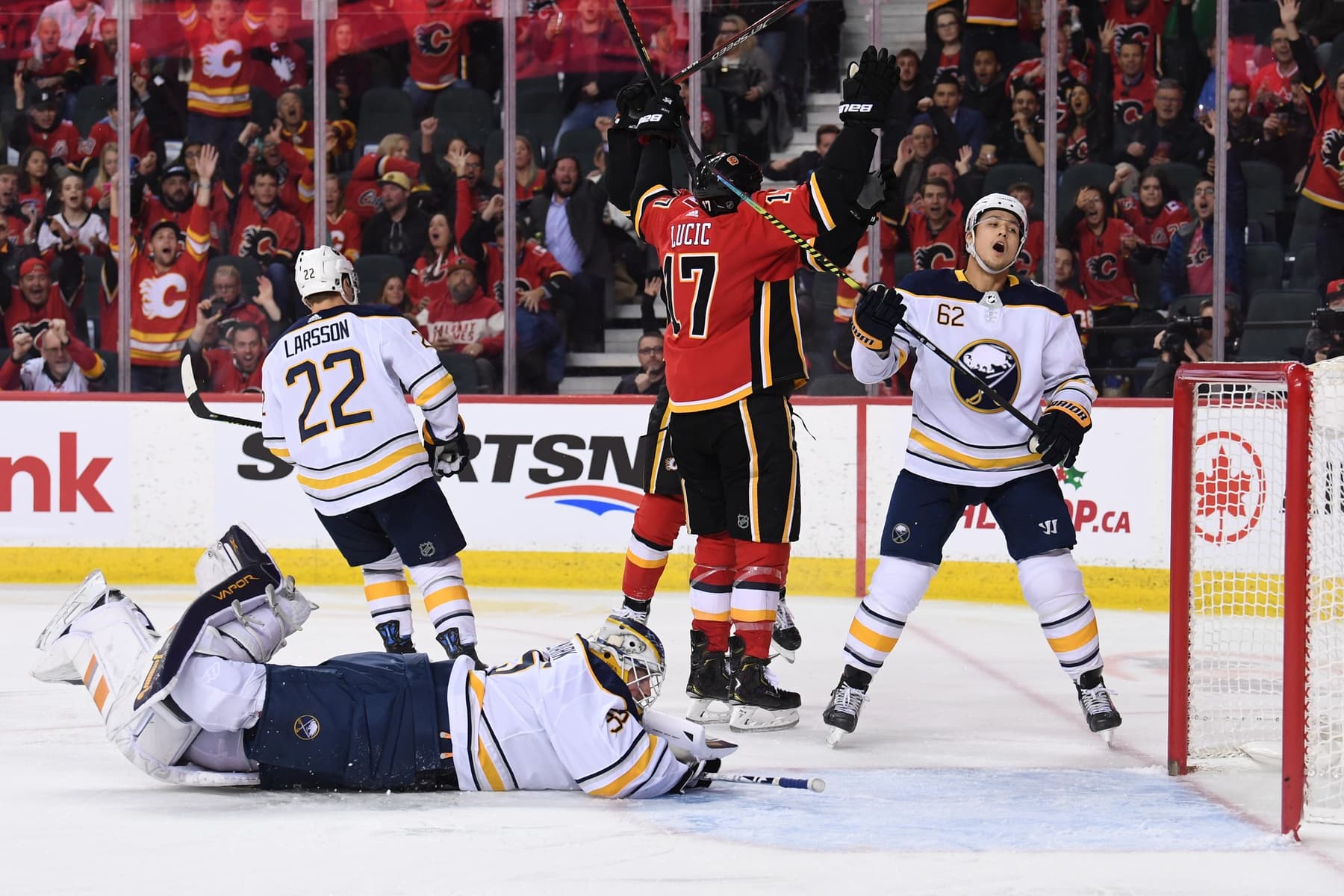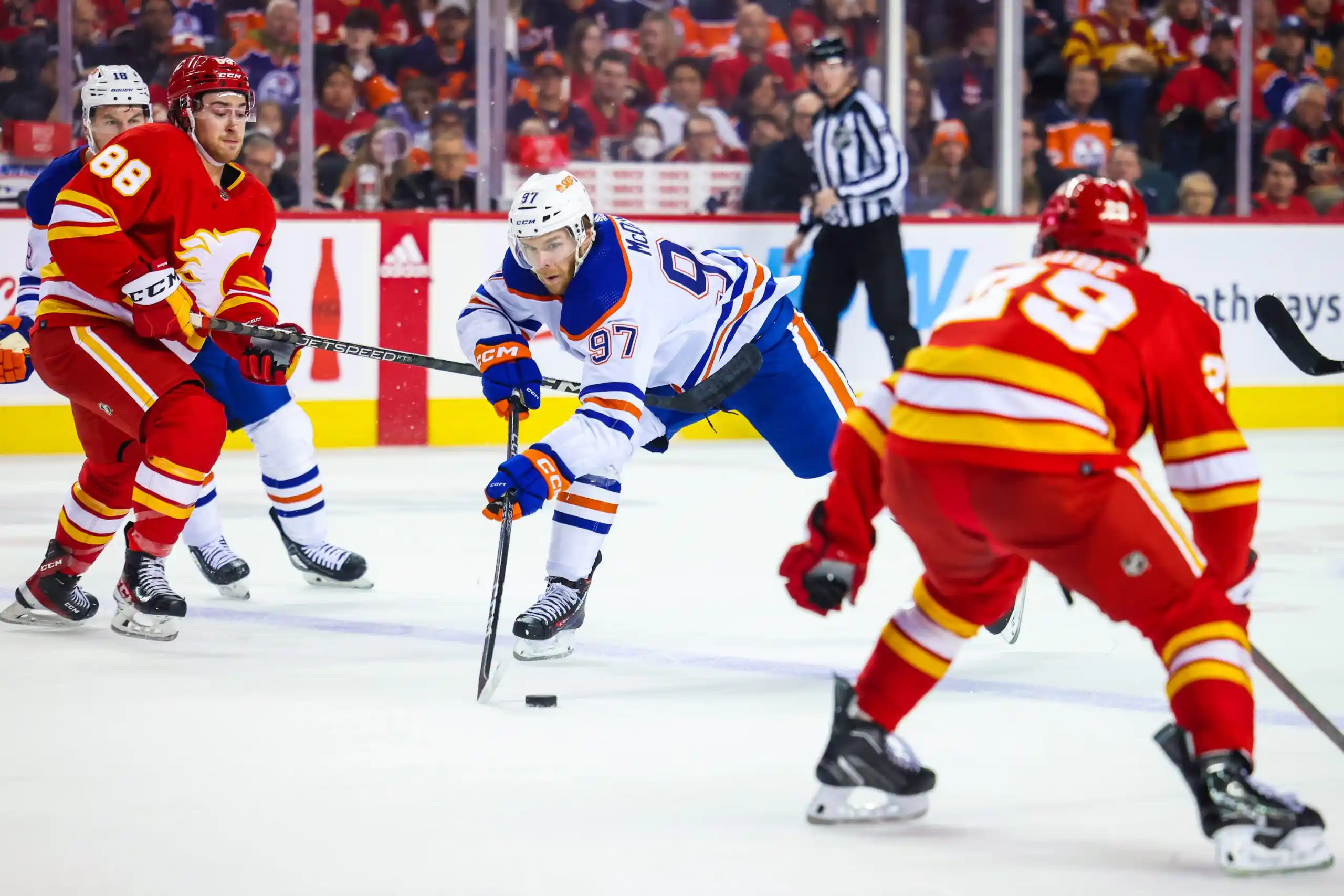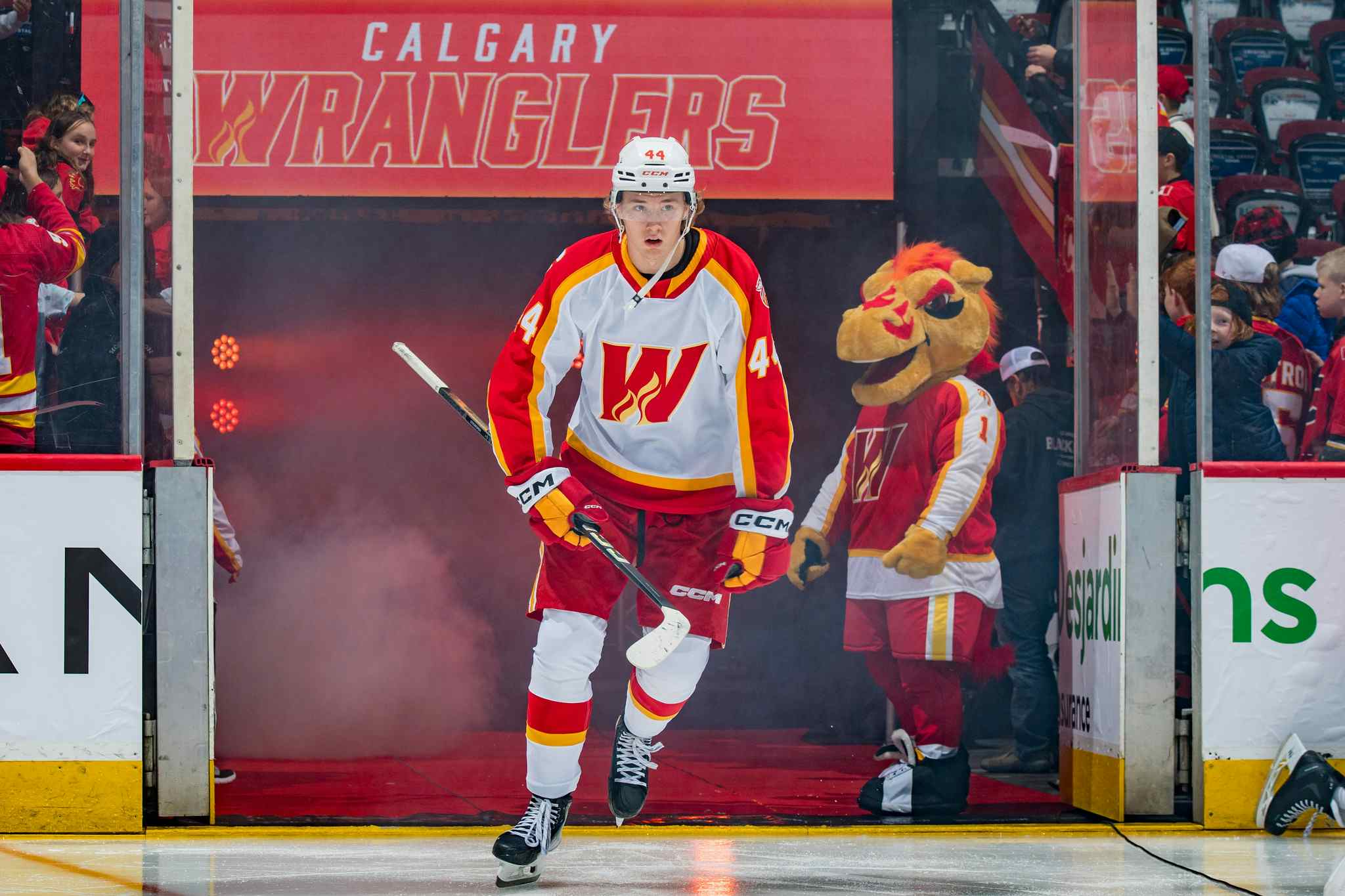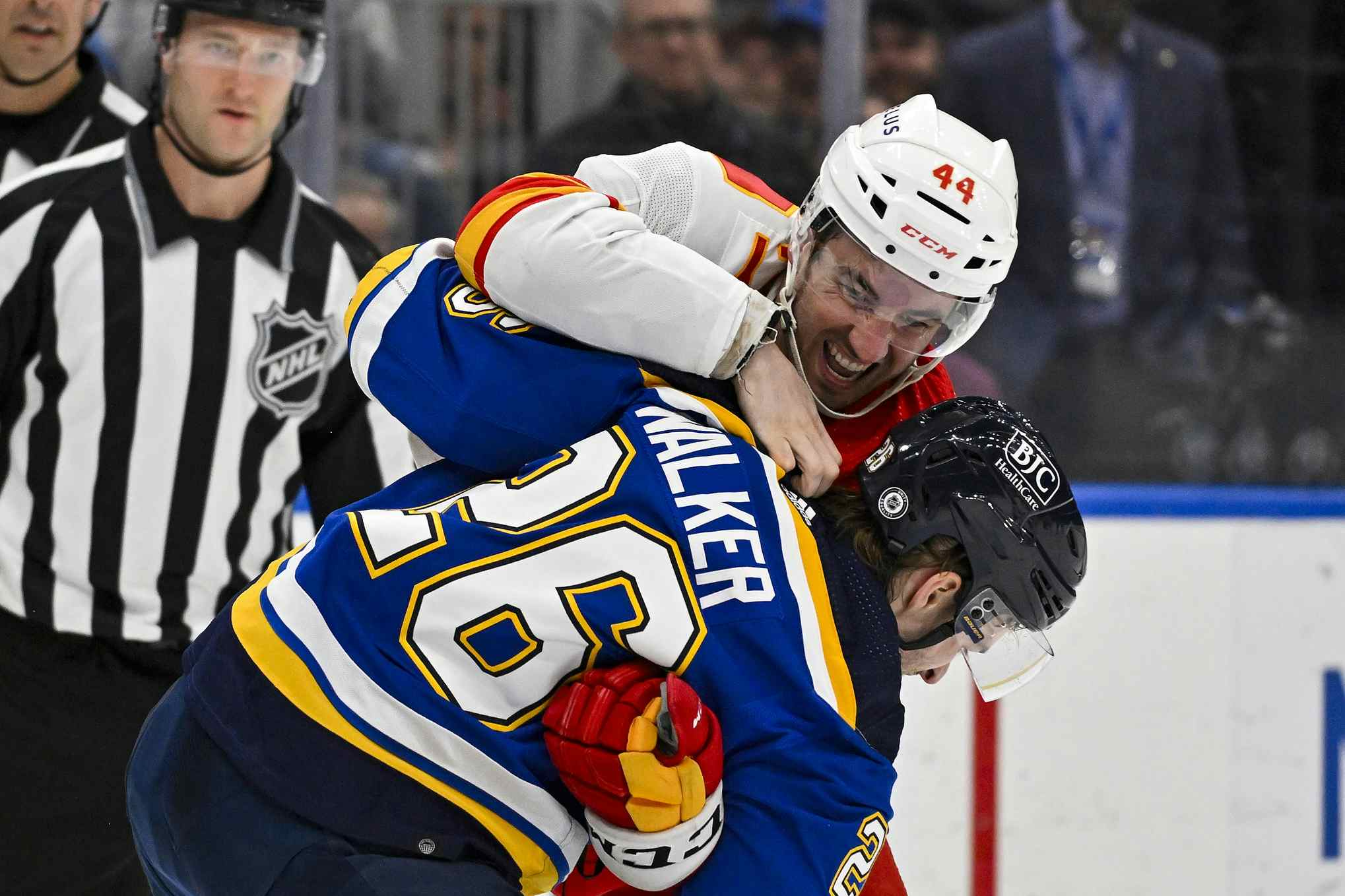FlamesNation player evaluation: Milan Lucic

By Mike Gould
3 years agoWhen the Calgary Flames acquired Milan Lucic from Edmonton in July 2019 in exchange for James Neal, first reactions ruled near-unanimously in the Oilers’ favour.
Yahoo! Sports’ Ryan Lambert called the deal “inexplicable” and “a clear overreaction to the Flames’ first-round loss to the Avalanche.” Over at Deadspin, Barry Petchesky lauded the deal as “miraculous” for Edmonton and called Neal, unlike Lucic, “a prime candidate for a bounceback season.” After Neal’s hot first week of the season, Sportsnet’s Mark Spector started referring to the two traded players as “lumbering Milan Lucic” and, for Neal, “The Real Steal.”
At this point, however, almost fourteen months after the deal went down, the Flames’ side of the deal is starting to look a lot more defensible. Let’s take a look at how Milan Lucic fared in his first year with Calgary.
2019-20 season summary
After a year of deleterious results from James Neal across the board, Lucic would have served as a decent-sized upgrade merely by treading water at even-strength. He did a bit better than that.
(Data courtesy of NaturalStatTrick)
| GAMES PLAYED | GOALS | ASSISTS | POINTS | TOI/GP | 5V5 CF% | 5V5 CF% REL | OZF% | PDO |
| 68 | 8 | 12 | 20 | 13:20 | 50.07 | +0.10 | 46.7 | 1.004 |
Lucic is certainly past his prime. He’s not the strong impact forward he once was with the Boston Bruins, and everybody knows that. He’s definitely not worth the $5.25 million the Flames paid him this season.
But he still has his uses. His expected goals percentage of 50.79% ranked 11th on the Flames this year. That figure was largely boosted by his solid defensive results: his 2.10 expected goals against/60 ranked third on the Flames among regulars, only behind Mark Jankowski and Mark Giordano. That expected figure showed through in his actual results, with the Flames surrendering just 2.32 GA/60 with Lucic on the ice, behind only Derek Ryan, Sam Bennett, Giordano, and Rasmus Andersson among Flames with decent TOI sample sizes.
Lucic was a bit of an adventure offensively in 2019–20. He started the year on a dreadful 27-game goal-scoring drought, only picking up four assists during that span. During that timespan, Lucic had some of the worst execution results on the team, with the Flames generating just 1.71 goals/60 and allowing 2.57 goals against/60 with him on the ice.
After Lucic finally broke through on December 5 against the Sabres with his first goal as a Flame, the tide really began to turn in his favour. He recorded a respectable 8 goals and 16 points in the season’s final 41 games and became one of the team’s best drivers of play. The Flames scored 57.14% of the goals with Lucic on the ice after December 5, compared his 40% GF figure before that date. That 57.14 GF% after December 5 for Lucic ranked second among Flames regulars, only behind Mark Giordano.
Was Lucic’s big turnaround a result of changing luck or improved play? The answer probably falls into both categories. Lucic definitely isn’t as bad as his results in October and November would suggest, but his expected goals percentage only marginally improved after December 5, going from 50.51% before that date to 50.95% afterwards. He certainly under-performed in the first half of the season, but there’s also lots of evidence suggesting that his second-half performance might be difficult to replicate.
But there’s also no denying that Lucic settled into his role as the season went along. He saw his ice-time increase substantially from just 10:22 per night at 5v5 pre-December 5 up to 12:05 afterwards. He started to convert on the power play, with his final tally of five PP goals ranking fourth on the team and the most of anybody on the second unit. Lucic also welcomed the coaching change from Bill Peters to Geoff Ward, calling the latter “a guy who knows me more than anyone in the league.” Maybe it’s no coincidence that Ward became the Flames’ interim head coach on November 29, right before Lucic started scoring.
Lucic formed one of the Flames’ best lines in the playoffs with Sam Bennett and Dillon Dube. The trio combined for nine points in the Flames’ four-game victory over the Winnipeg Jets in the qualifiers, with four of those points coming from #17.
Compared to last season
Lucic was a lightning rod for negative media attention in Edmonton, particularly near the end of his tenure with the Oilers. Was it warranted? Partially. He was brought in to be a complementary winger for Connor McDavid, but he only scored six goals in his final season with the team. His underlying numbers were solid, if unspectacular, but he couldn’t keep up with the team’s stars. All told, he was a massive disappointment, and with four years left and a no-move clause on his $6 million-per UFA contract he signed with the Oilers in 2016, fans and management were more than ready to move on.
One of the biggest things that changed with Lucic in Calgary were fan expectations. The departed James Neal was a dreadful fit in the Flames’ top-six, but he also felt woefully miscast in a depth role. He couldn’t find open space, he didn’t play with an edge, and his defensive impact was ghastly. The trade saw the Flames get a player perfectly suited to replace Garnet Hathaway in their bottom-six in exchange for a guy who didn’t fit anywhere.
Lucic and Neal both desperately needed fresh starts, and they both got them. Expectations were low for both guys, and they both exceeded them. That has to be considered a win-win.
What about next season?
It’s hard to foresee Lucic waiving his no-movement clause for a trade only a year after he did so to come to Calgary, so you can safely expect to see him in the lineup for the Flames whenever the 2020–21 season begins. At this point, Lucic is a known quantity who can probably be penciled in to score 5-10 goals and 20-25 points every year. He’s not fast, but he’s a smart passer with good awareness at both ends of the ice.
In short: he’s solid. Considering how unfortunate the Flames have been with UFA signings like Mason Raymond, Troy Brouwer, and Neal turning into very poor players almost immediately after joining the team, they can surely live with “solid.” Would they like to pay him less money? Definitely. That said, in terms of what he provides the team on and off the ice, it’s hard to deny that Lucic provides the team with okay value.
It’s hard to envision Lucic getting that much slower, so, unless he forgets how to pass and shoot, he will probably continue being a decent player for the Flames. They’ll probably look at moving him for cap relief once his contract is easier to move (read: when it has just one or two years left).
2020 Player Evaluations

Recent articles from Mike Gould





